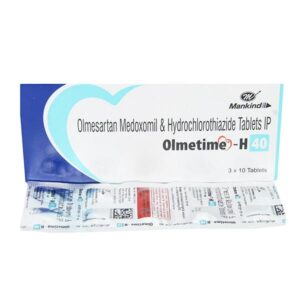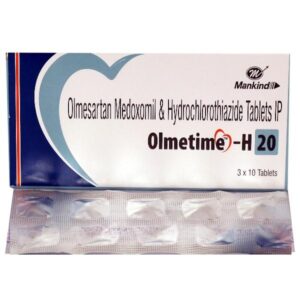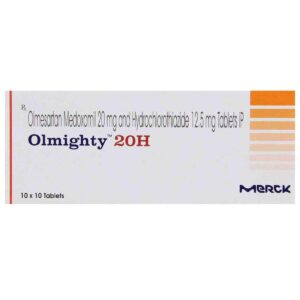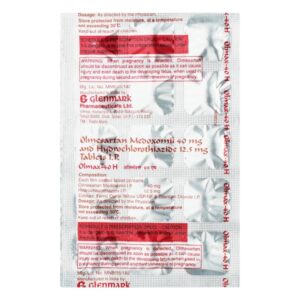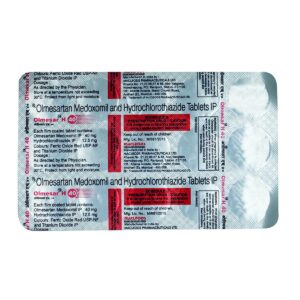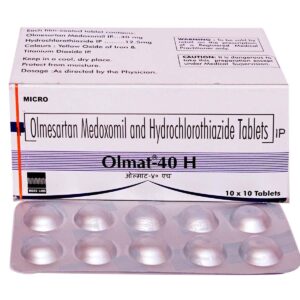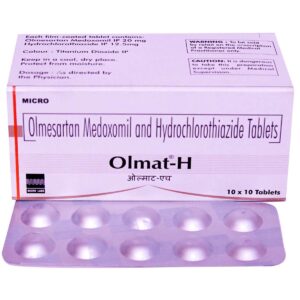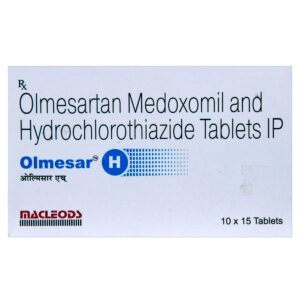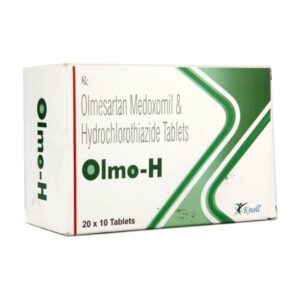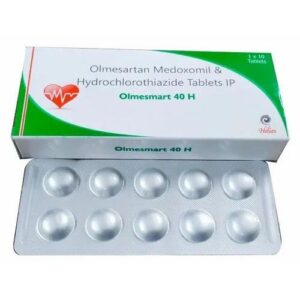HYDROCHLOROTHIAZIDE + OLMESARTAN
Hydrochlorothiazide: Hydrochlorothiazide is a medication used to treat high blood pressure (hypertension) and fluid retention (edema) caused by various conditions such as congestive heart failure, liver disease, or kidney disorders.
Mechanism of Action:
It belongs to a class of drugs known as thiazide diuretics. It works by increasing the excretion of sodium and water from the body, thereby decreasing fluid volume in blood vessels. This helps in lowering blood pressure and reducing swelling.
Dose:
The dose of hydrochlorothiazide varies depending on the condition being treated and individual patient factors. The typical starting dose for hypertension is usually 12.5 to 25 mg taken orally once daily. The dose may be adjusted by your healthcare provider based on your response. For edema, the starting dose is usually 25 to 100 mg taken once or twice daily.
Side Effects:
Common side effects of hydrochlorothiazide include:
1. Increased urination
2. Dizziness or lightheadedness
3. Headache
4. Upset stomach or diarrhea
5. Muscle cramps or weakness
6. Blurred vision
7. Increased sensitivity to sunlight
In rare cases, more serious side effects may occur, such as severe allergic reactions, electrolyte imbalances, low blood pressure, or kidney problems. It is important to seek medical attention if you experience any severe or persistent side effects.
This is not an exhaustive list of all possible side effects. Consult your healthcare provider or read the medication leaflet for a complete list of side effects and precautions.
As with any medication, it is important to take hydrochlorothiazide as prescribed by your healthcare provider and to follow their instructions for monitoring your blood pressure and overall health.
Olmesartan: Olmesartan is a medication used to treat high blood pressure (hypertension). It belongs to a class of drugs known as angiotensin receptor blockers (ARBs).
The mechanism of action of Olmesartan involves blocking the action of a hormone called angiotensin II. Angiotensin II causes blood vessels to narrow and stimulates the release of another hormone called aldosterone, which leads to sodium and fluid retention. By blocking the effects of angiotensin II, Olmesartan helps to relax and widen the blood vessels, reducing blood pressure and improving blood flow.
The typical starting dose of Olmesartan is 20 mg once daily. Depending on the patient’s response, the dose can be increased to a maximum of 40 mg per day. Olmesartan can be taken with or without food.
Common side effects of Olmesartan may include dizziness, headache, fatigue, diarrhea, abdominal pain, and back pain. These side effects are generally mild and resolve on their own. However, if they persist or worsen, it is important to consult a healthcare professional.
Rare but serious side effects may include an allergic reaction (such as swelling of the face, lips, throat or tongue, or difficulty breathing), severe dizziness or fainting, and kidney problems. If any of these serious side effects occur, immediate medical attention should be sought.
It is important to note that Olmesartan is not recommended for use during pregnancy, as it may harm the unborn baby. It is advised to discuss the risks and benefits of using this medication with a healthcare professional if planning pregnancy or already pregnant.
As with any medication, it is crucial to follow the dosage instructions provided by the healthcare professional and report any unusual or severe side effects experienced while taking Olmesartan.


